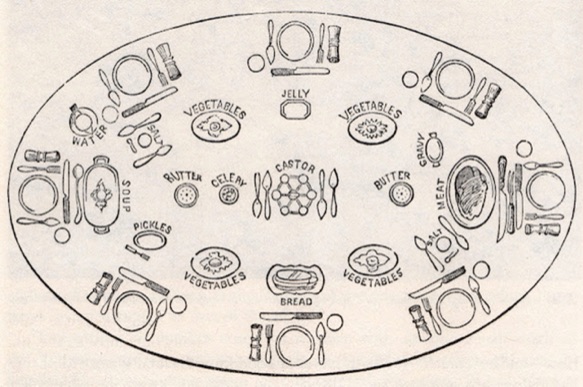This table setting was illustrated in the March, 1859 issue of Godey's Lady's Book, which became one of the most widely circulated magazines in the mid-nineteenth century. The magazine included fashion plates, guides on homekeeping and cooking, and cultural essays.
The editor, Sarah Josepha Hale (1788-1879), was the leading advocate for the nationalization of Thanksgiving Day. She worked tirelessly for years to achieve the establishment of the holiday, using the publication as a platform for her cause. It was her strong belief Thanksgiving would help unify the divided nation.
Featured on the table in this illustration are several items of glassware for serving food including a celery vase, butter dishes, salt dishes, and a castor set. In the mid-nineteenth century, celery was a very costly vegetable to purchase and became something of a statement of income when it was featured prominently in a tall vase in the center of the table. Butter dishes were round rather than rectangular because butter was made either by hand on the farm or at a creamery. It was shaped into round balls or pats, unlike the 4 ounce sticks common today.
Open salt dishes required salt to be spooned onto your food, rather than shaking it from a salt shaker. Pepper was separated from salt and was part of the castor set. Castor sets, also called cruet sets, were important for adding spice and flavor to food. They held oil, vinegar, mustards and peppers. – The Corning Museum of Glass, 2013
Etiquette Enthusiast, Maura J. Graber, is the Site Editor for the Etiquipedia© Etiquette Encyclopedia

No comments:
Post a Comment
Note: Only a member of this blog may post a comment.